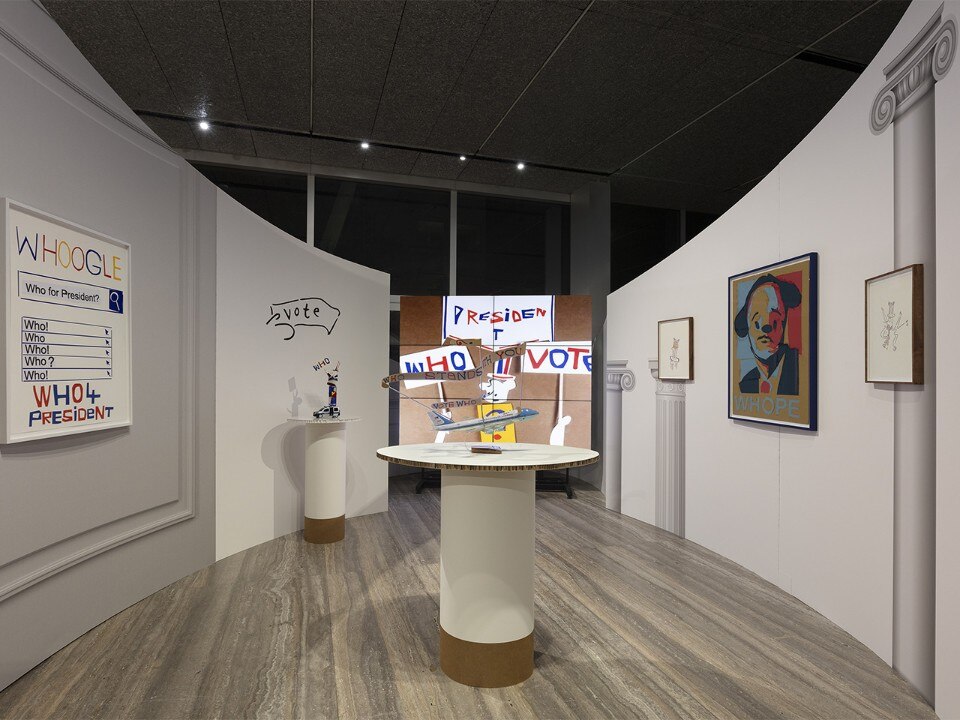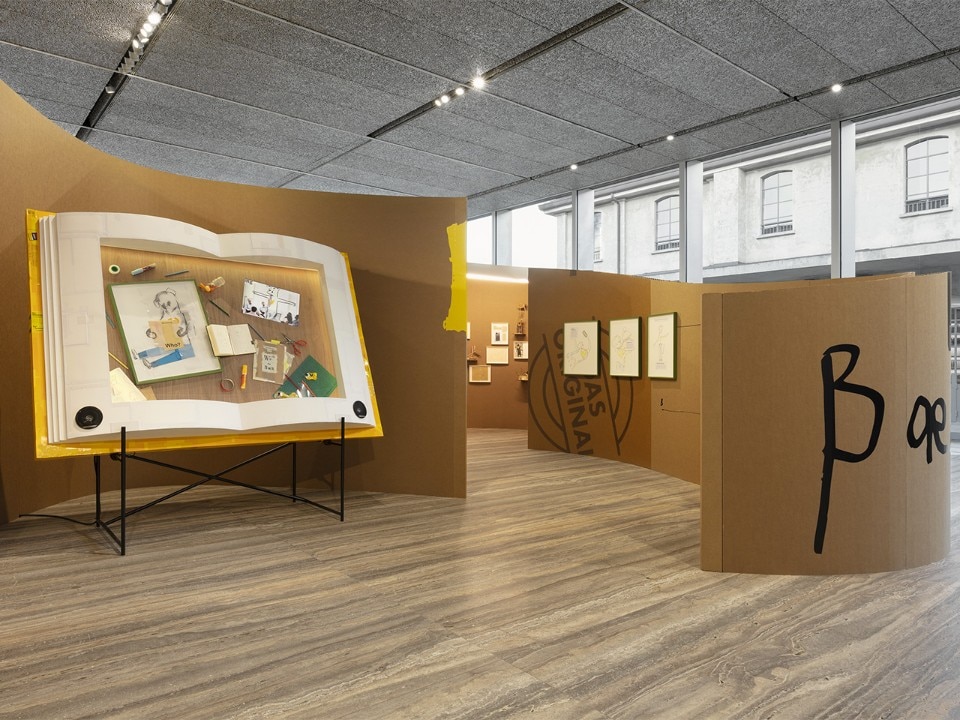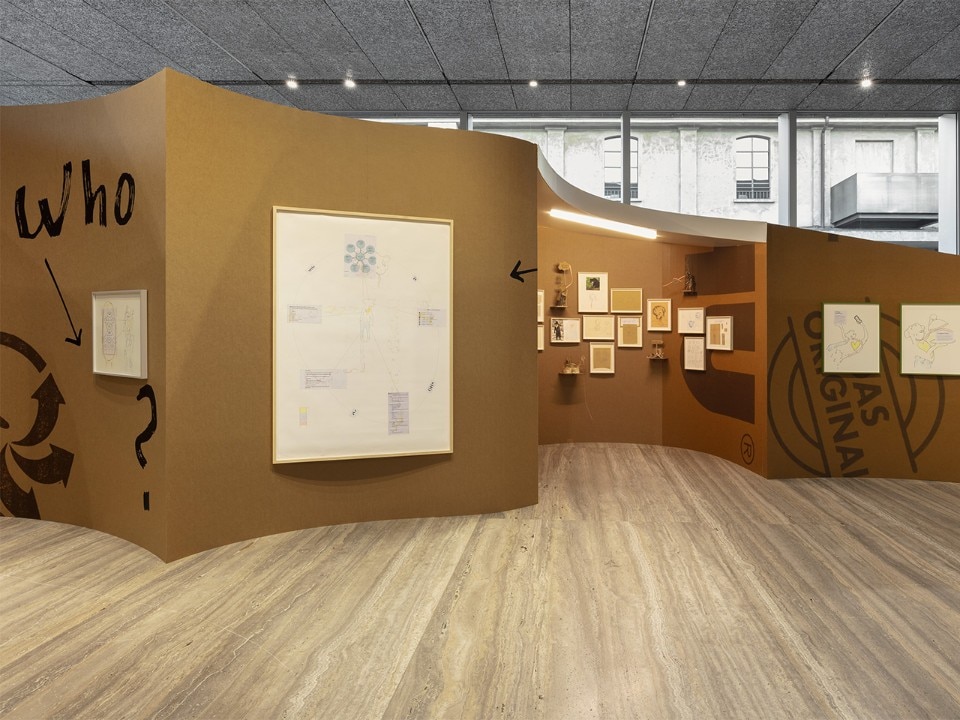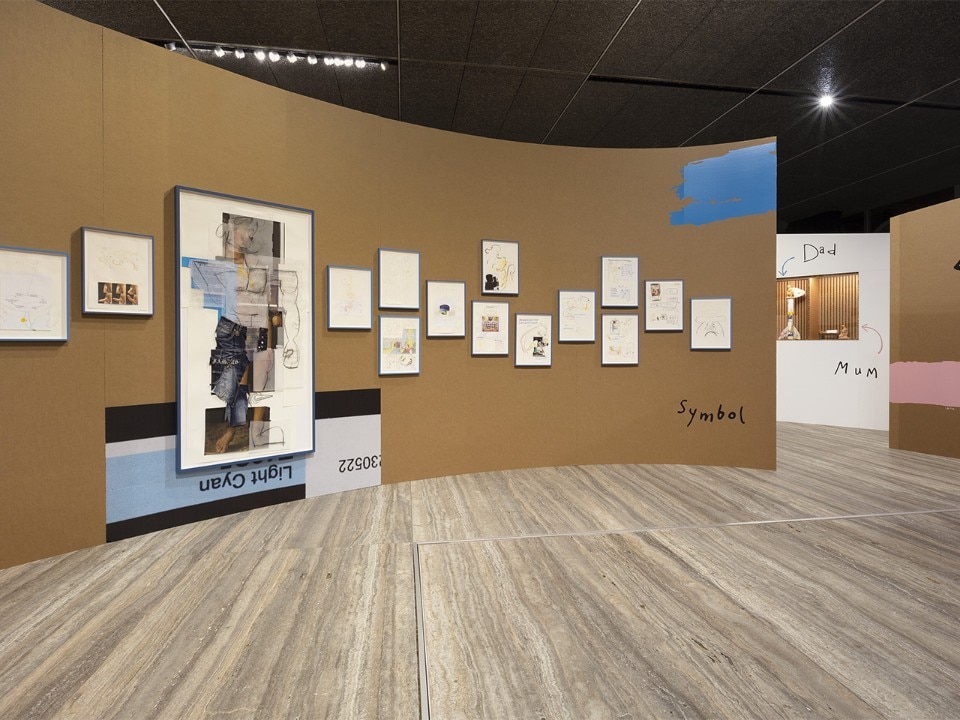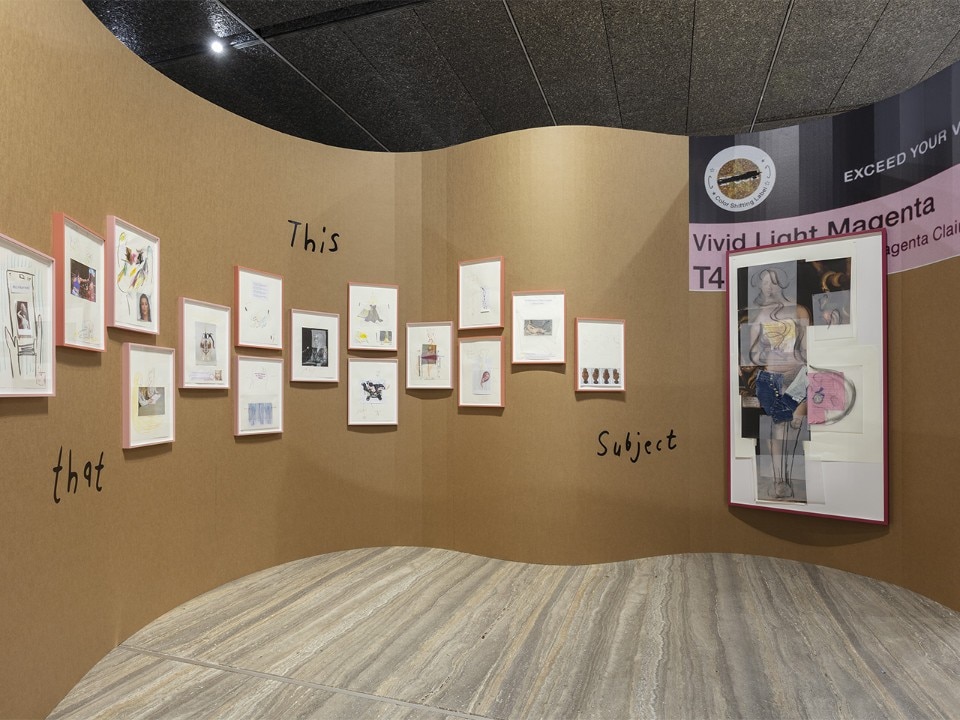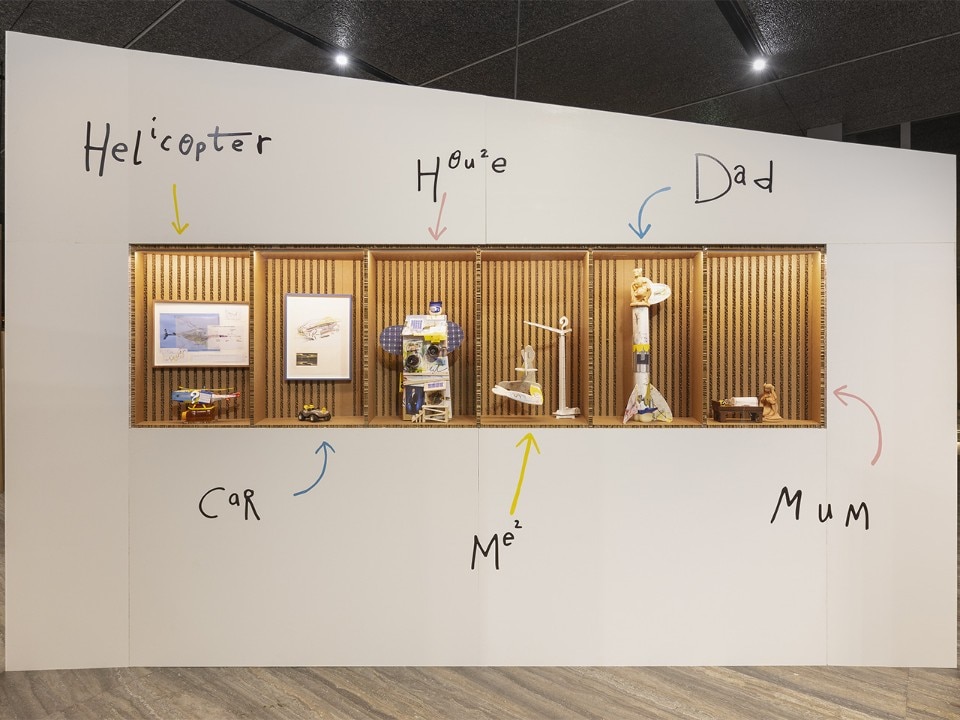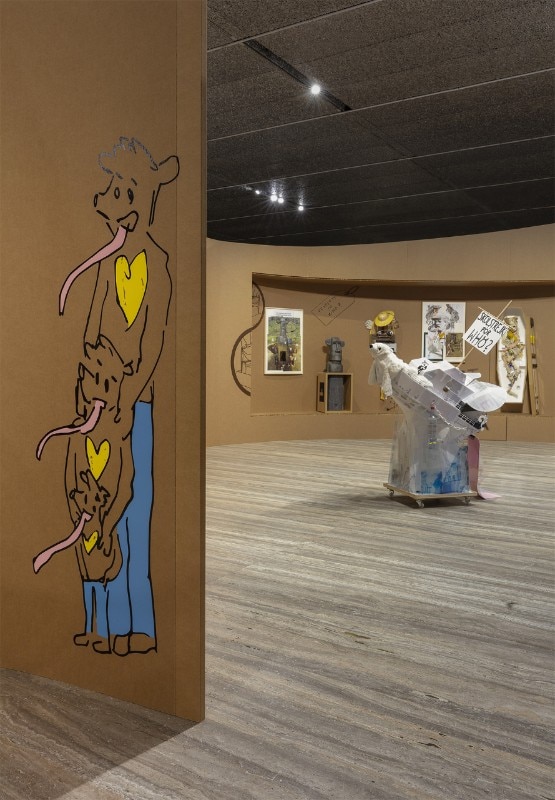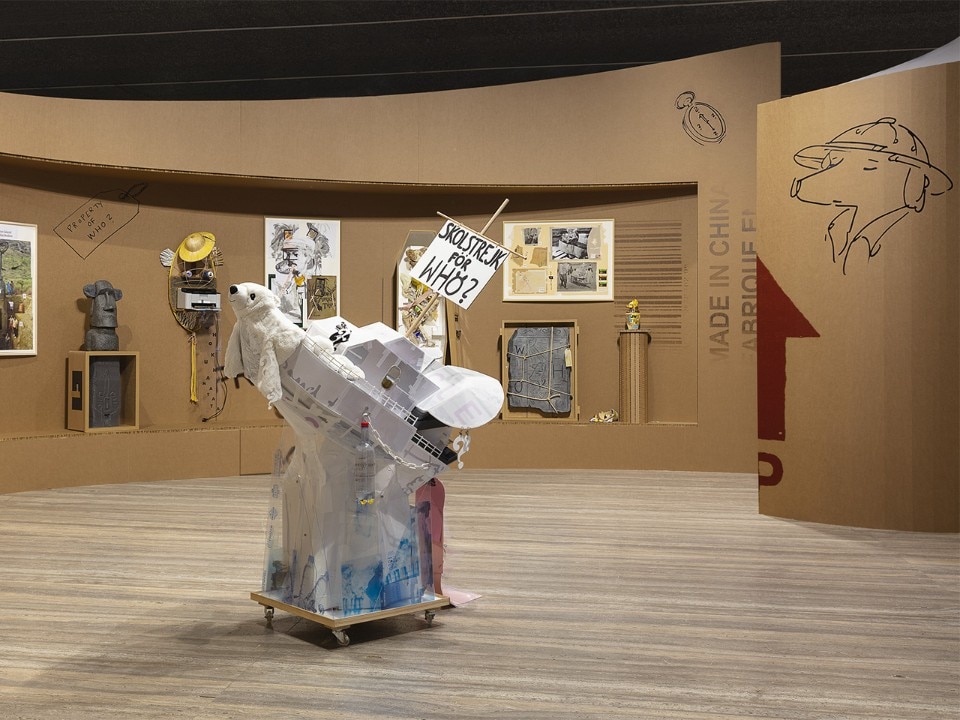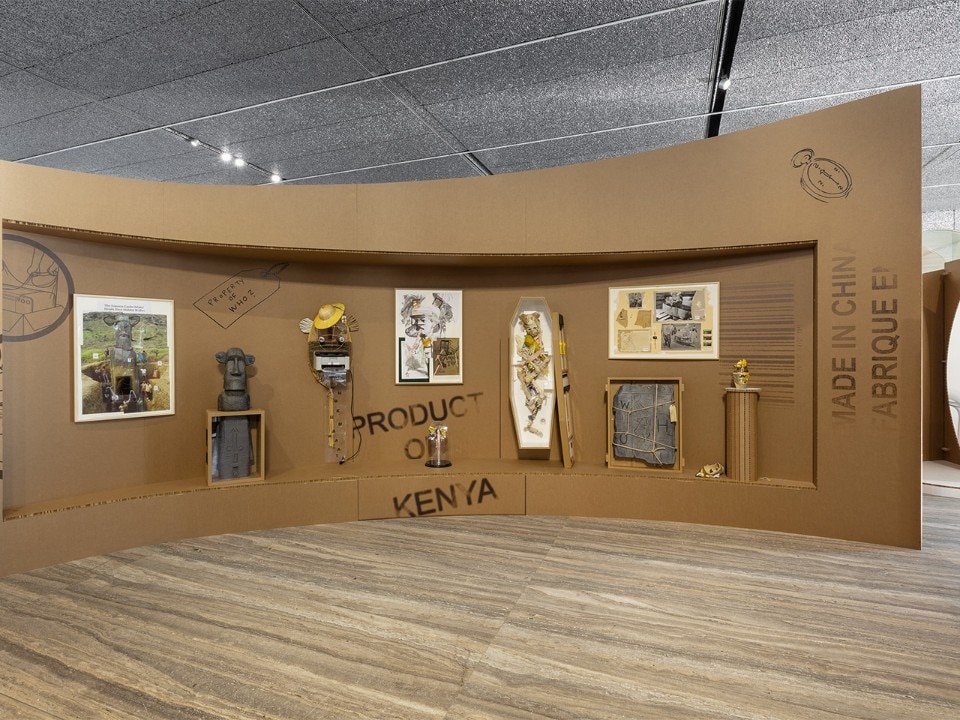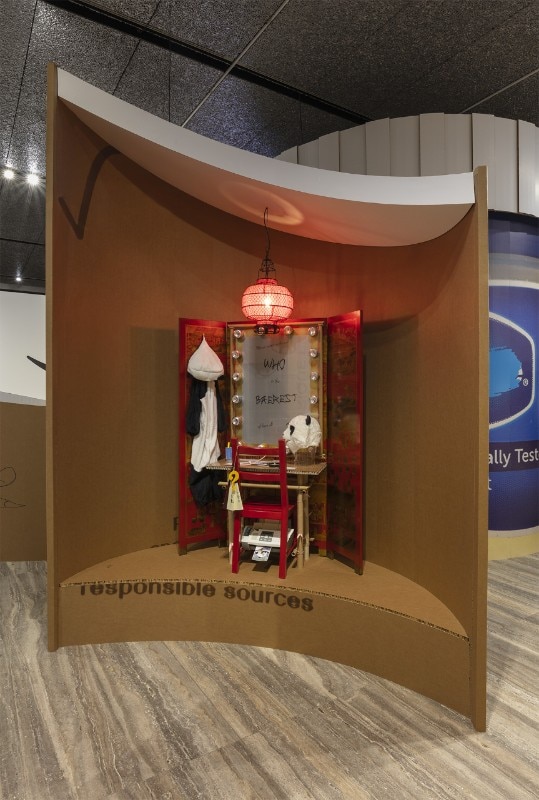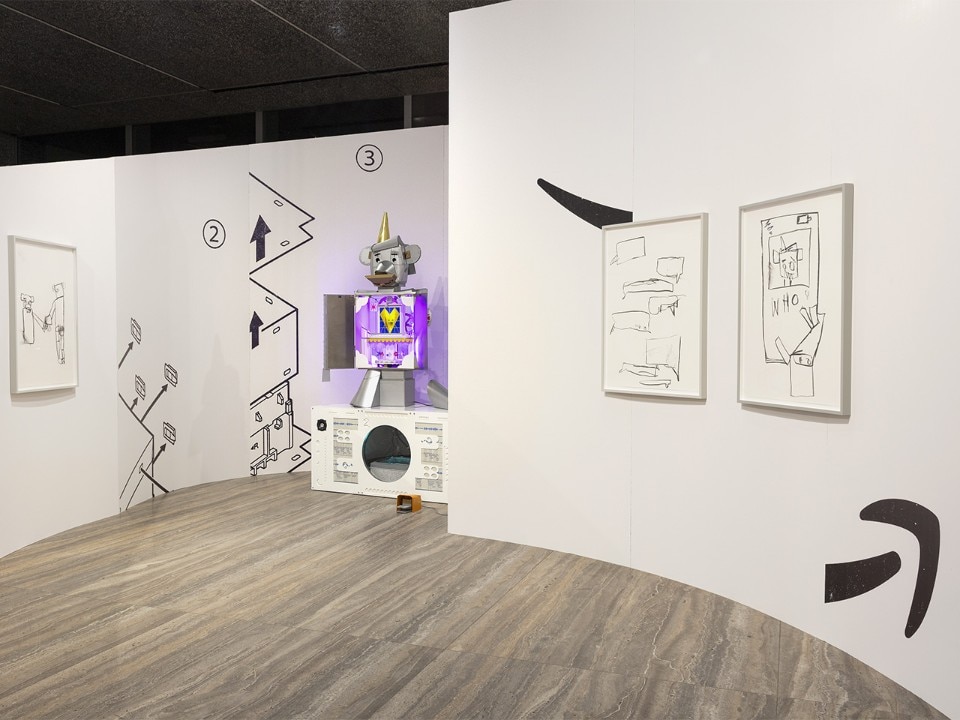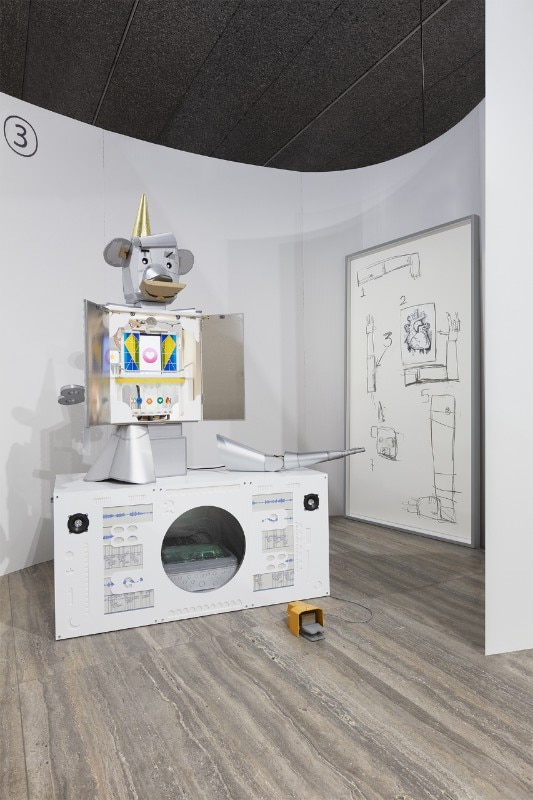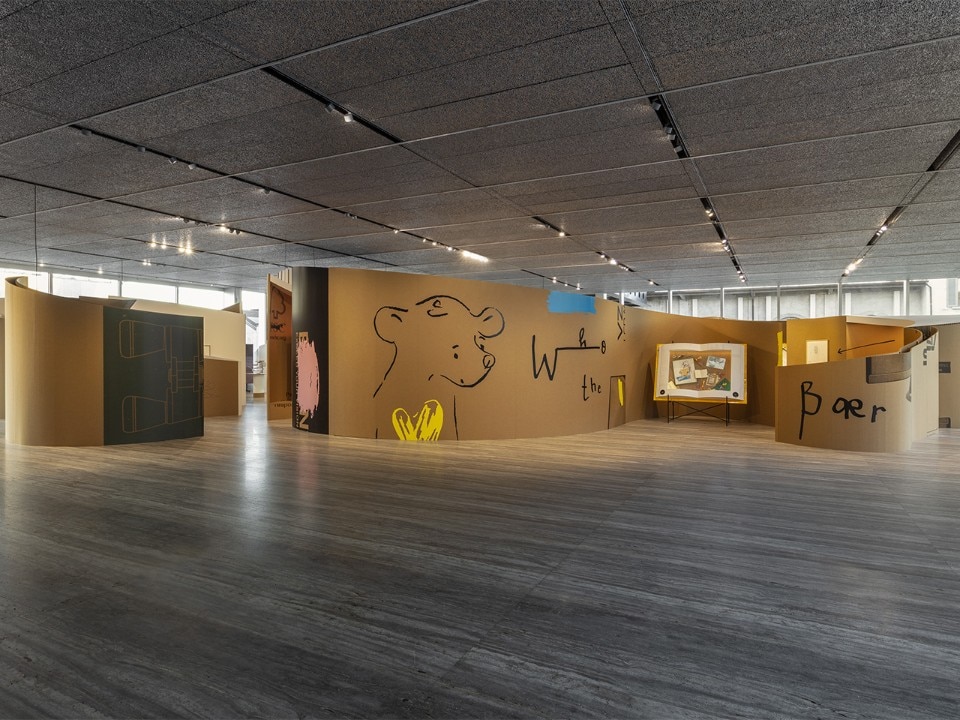After several postponements, Simon Fujiwara’s exhibition has opened in the foundation’s podium. It is a site-specific project that unfolds in a space made of cardboard and recycled materials, also in the shape of a teddy bear. The idea was born during the first lockdown when the artist found himself alone drawing and felt the need to create a cartoon character, a childlike figure that embodied the artist’s thoughts on identity. “Who” defines from its name a question, who is he? The bear has no age, no gender identity, no personality, it is just an image.
In this work Fujiwara continues his investigation into images, into their interchangeability favoured by the flattening of screens where the image of a chocolate bar is as important as the one showing climate change. In this work, however, the more intimate reflection takes on a warmer form than in other works: the collage, the duckboard, the pencil drawing, the juxtapositions of materials all contribute to generating a work that delves into the artist’s imagination with fewer filters. Although it is part of the international debate on identity, which touches on various themes – gender, male and female, racial, religious and political issues – and is therefore closely linked to the present time, the bear seems to have a light touch, that of the subcultures of comics and animated films to which the artist refers to. A world of images that offers everyone the possibility of searching for a more authentic self.
Maybe.
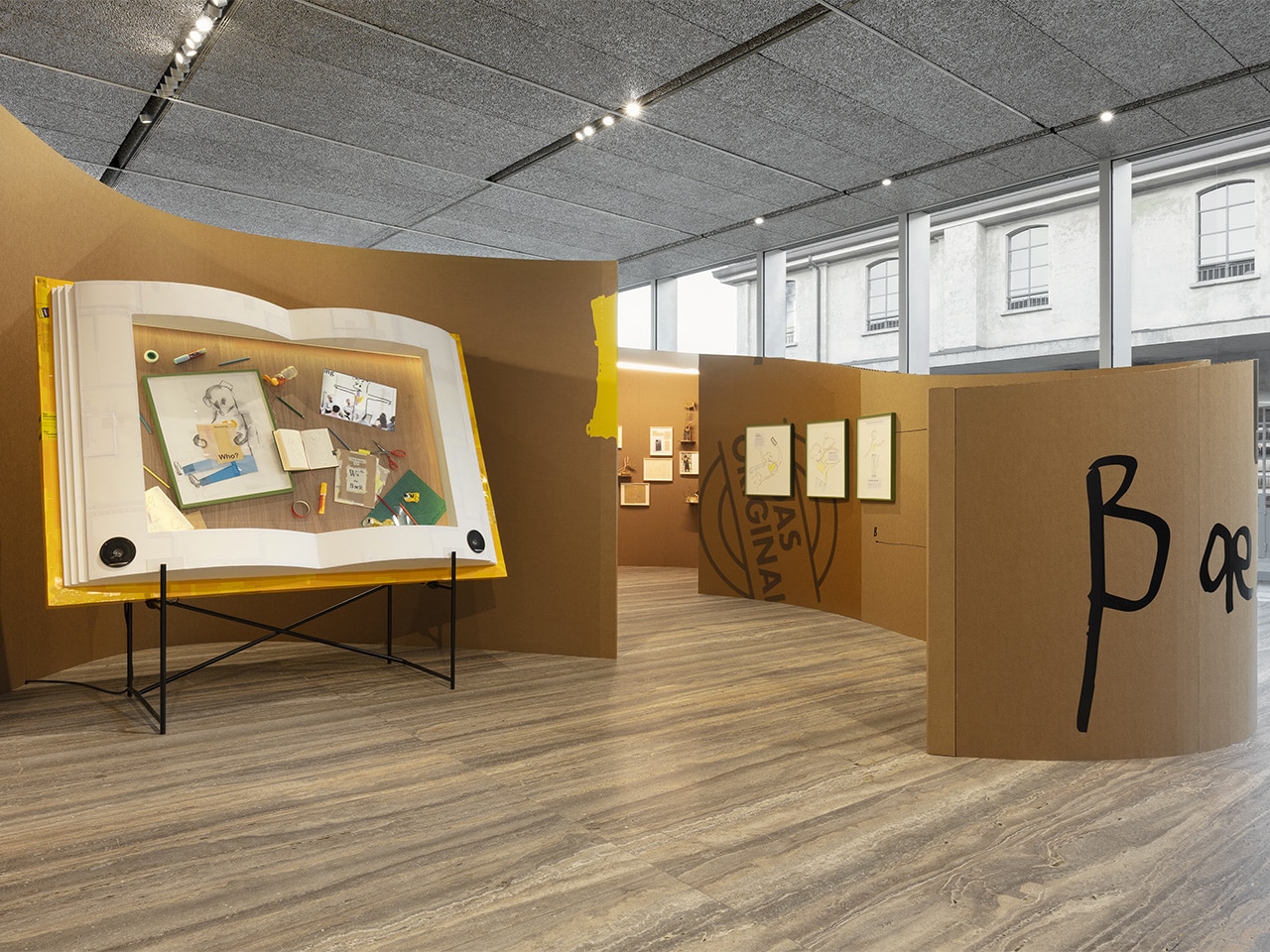
I was struck by something you said in an interview a few years ago when you said you did not want to take a political stance. Would you say the same today?
I have always had a conflicting position on this point. I believe that taking a stand is necessary, it is the only way for things to change, for violence to stop, it is the only way for people to express a point of view and everything good in the world comes from that. I think in my work this is quite clear. I grew up in a white world in a small town where I was the only non-white, gay boy and I was given that identity but I didn’t want to be locked into that my whole life. There’s more I can show about myself and I don’t want my art to be just about this story. My job is not to be an educator and become a symbol of this identity. I don’t want to become an object, I want to be more than that.
Everyone has the possibility to have more than one identity, right?
Yes, but different identities have more possibilities to be more things. White heterosexual men have more possibilities to be different things than white heterosexual women, don’t they? If we take this as an example we can extend it to many other identities in the way things are perceived and mediated. With my work I want to be able to have more freedom, to extend beyond my individuality precisely because my individuality is linked to politics.
What do you think about the pandemic, one year after the lockdown that led you to this work of “Who the bær”?
I think I will continue to work on this. It’s a tool, it’s not even a character, it’s a lens to look at the world through, a world of images. I grew up in a really dead and poor place where images were the only means to picture a bigger world. I grew up online, images were almost a fetish for me. And as an adult I’m trying to take a stand on how to read images. What I learned growing up is that these images are a mirage, but this way of enjoying images has accelerated so much that now we all live like this, whereas when I was young it seemed to me like a unique experience.
The marketing gurus say that influencers are finished, what do you think?
I don’t know if it’s a phenomenon that will last another year or ten but that’s not the point, it’s that we are looking for new ways to sell ourselves. We’re selling everything, our behaviours, our attention. I think this trend is not changing, the way it manifests itself may be changing, but the trend is not. We are entering a new marketing era that sells a new colonialism.
Do you think that people will not react, that things will simply be taken as they are?
I am an unhopeful person which is why I have to make bears! I continue to observe the world and reflect on what I do best: connecting all this madness and putting it in one place. Take a deep breath and look at what is. This is what I can offer.
How does your story relate to the art market?
Why are you asking me this question?
Because I think an artist has to deal with that too. There are many good artists who do not reach the market.
Not good enough and not as young as me! I started working when I was 26, then I won two awards in the same year at two fairs, Art Basel and Frieze Art Fair in 2010.
You have lived in different places, which have influenced your life and vision of the world. Is there a place where you would like to put down roots?
I have always thought that you have to love the place you live in. When I arrived in Berlin I resisted the city, then I abandoned that idea and decided that I didn’t have to love this place, I just had to live here, and now I do love it. I don’t think I would live anywhere else even though I like humid places, I like humidity. I think it’s because of my early years living in Japan, I remember those hot, humid summers. I like it because it seems like it breaks the barriers between the body and objects, you sweat and lose control of your body, a dream dimension. It’s a reverie, but I wouldn’t go back to Japan, it’s too closed, mono-cultural.
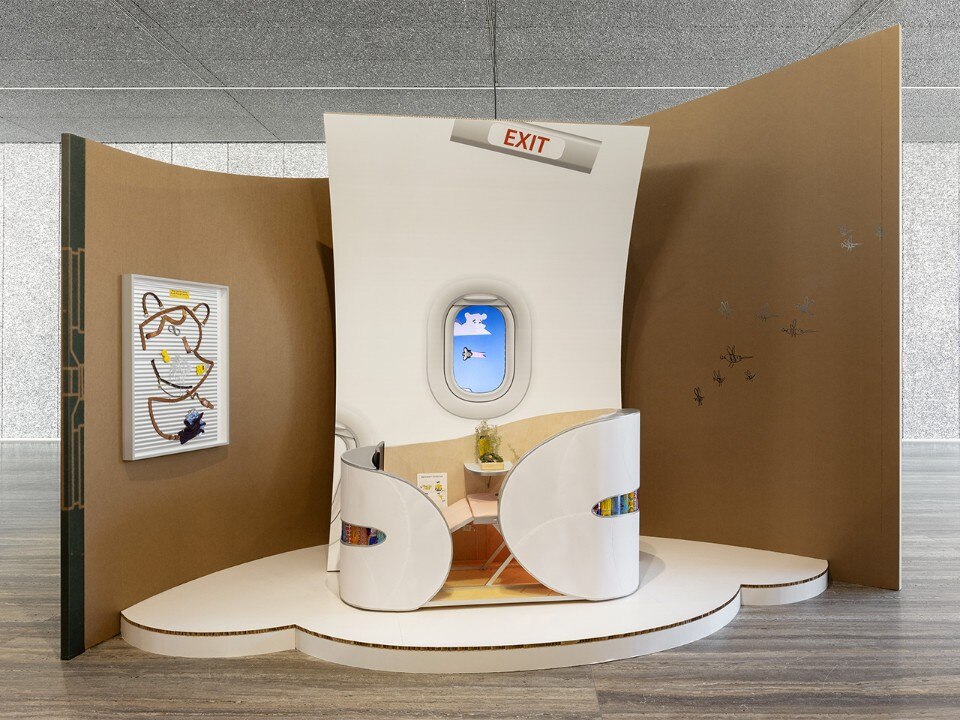
- artist:
- Simon Fujiwara
- exhibition:
- Who the bær
- where:
- Fondazione Prada, Milan
- until:
- 27 September 2021


